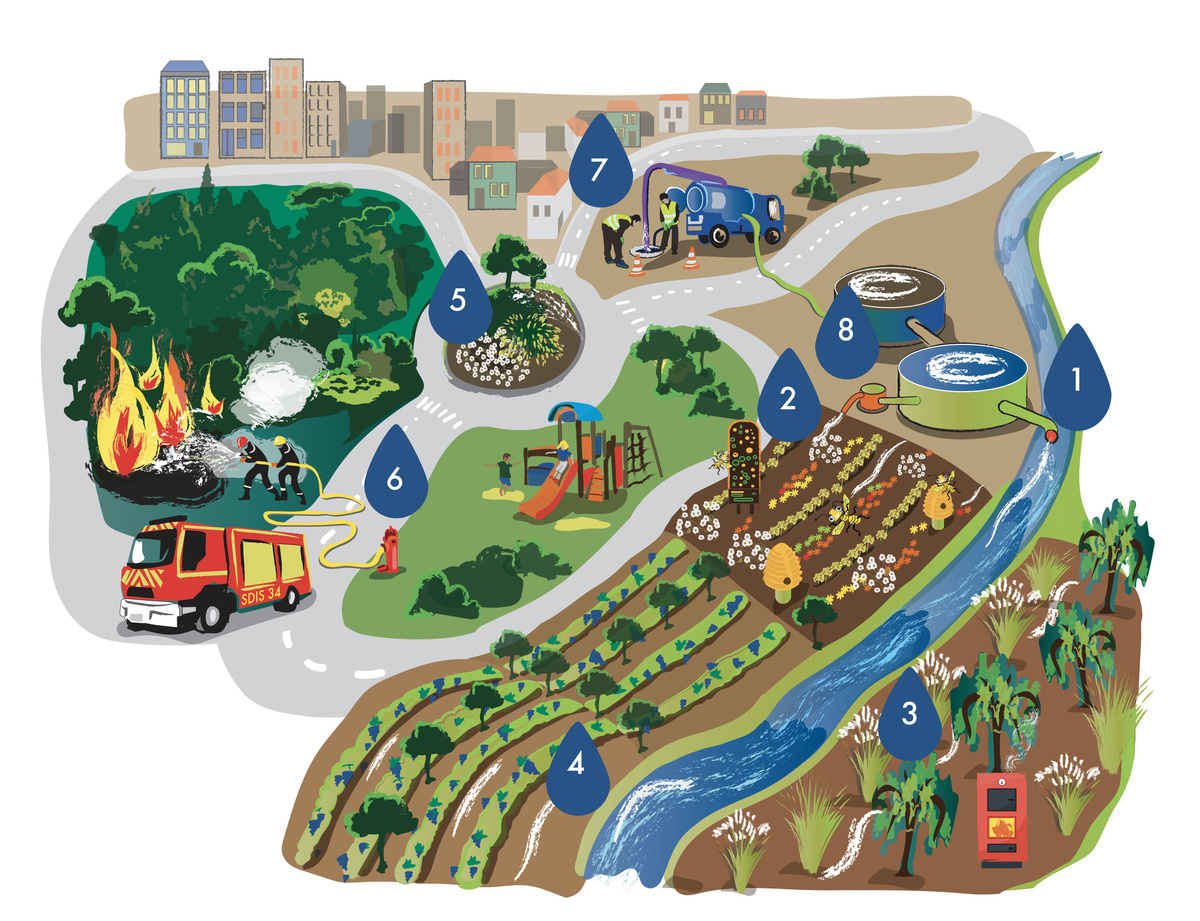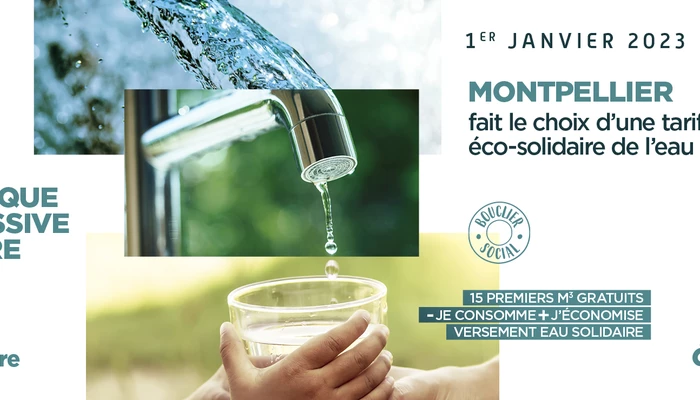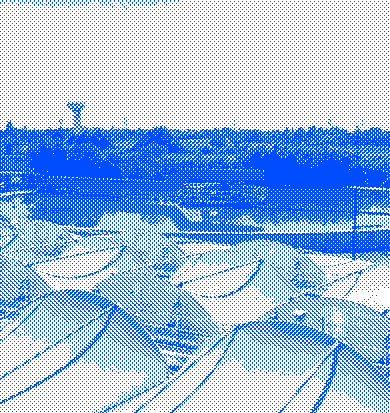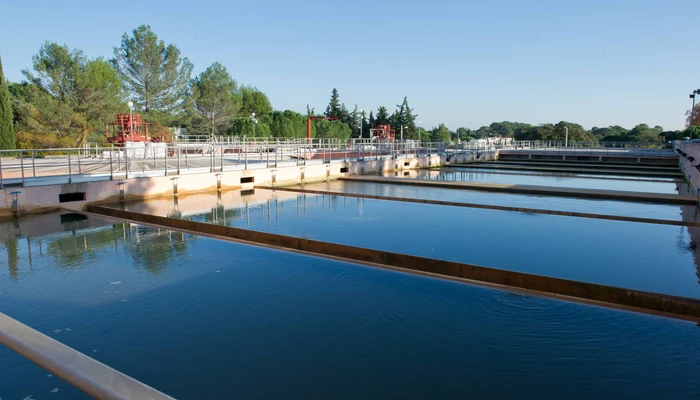What is treated wastewater reuse?
Reutilisation des Eaux Usées Treitées (REUT) is the practice of recycling water leaving wastewater treatment plants for various uses: agricultural irrigation, green spaces, urban uses such as hydro-cleaning, road cleaning.
Depending on the quality of the water, additional treatments are added, or not, to bring the resource into compliance with the various regulations framing the practice at national and European level.
A circular economy practice at the service of the region
The reuse of treated wastewater is one of the solutions to respond to the lack of availability of the resource, in order to reduce the gap between supply and demand that results from climate change, increased demand due to urbanization, population growth and economic development.
Optimizing the use of resources and minimizing the production of waste fits into the circular economy model carried by the Ministry of Ecological Transition.
An alternative resource available in the metropolitan area
The Metropole of Montpellier has - excluding Maera in Lattes - 12 wastewater treatment plants on its territory, treating 3 million m3/year or the equivalent of 171 soccer stadiums watered all year round.
Most of this water is discharged into watercourses, yet it is a potential source of raw materials and a genuine alternative to freshwater taken from the subsoil. Including the Maera wastewater treatment plant, this represents a potential of 32,686,819 m3/year of recyclable water on the Metropolitan territory, while taking into account the volume necessary for the ecological maintenance of receiving environments.
The multi-purpose program for active management of treated wastewater
Since 2018, the Metropole of Montpellier has been focusing on an innovative R&D program, the fruit of collaboration with the design firm DV2E and operator Aqualter.
It aims to experiment with sustainable practices for the multi-purpose use and recovery of treated wastewater from 4 of the region's wastewater treatment plants, according to 8 actions broken down into an operational phase, associated with study phases involving feasibility analysis, experimentation and operation.

Actions implemented by Métropole
In practice




